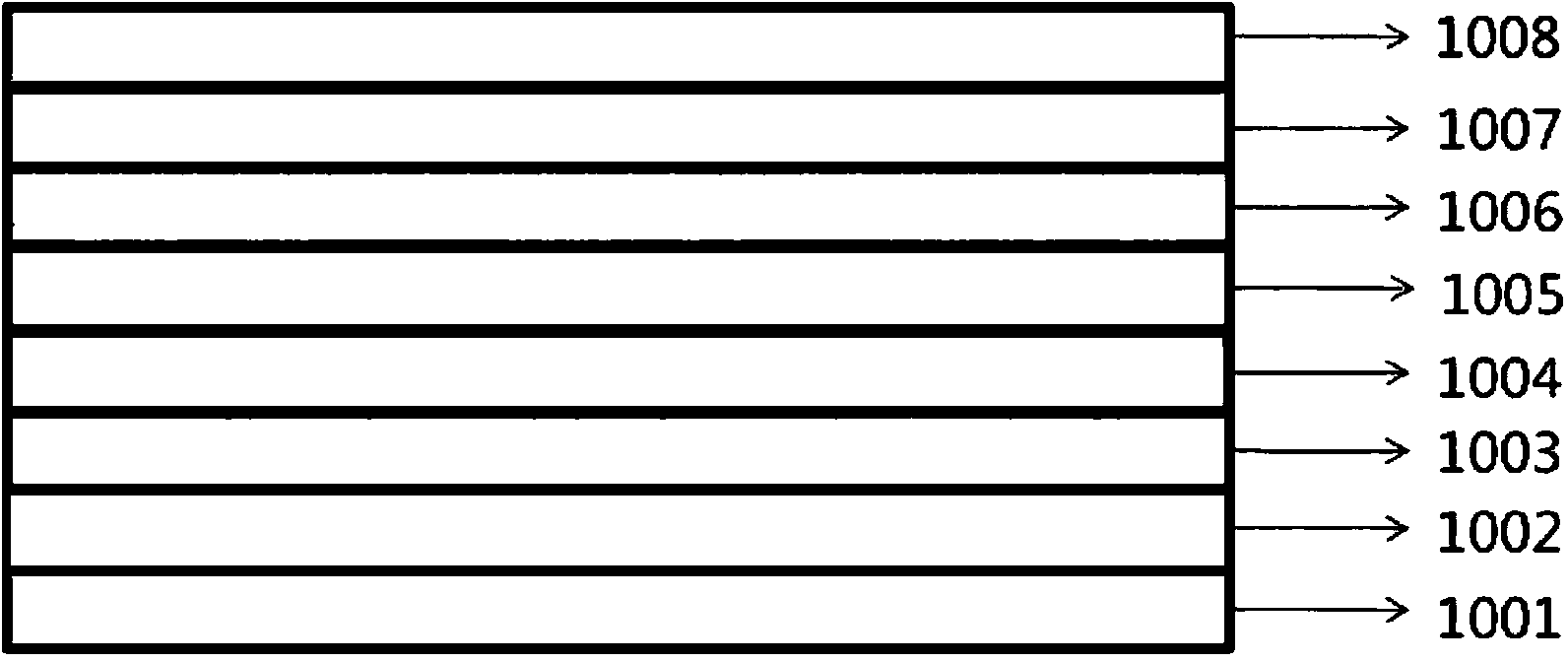Dye-sensitized solar cell comprising ion layer and method for manufacturing same
A solar cell and dye sensitization technology, applied in the field of dye-sensitized solar cells and their preparation, can solve the problems of reducing DSSC efficiency, unable to control the photoelectron recombination reaction, unable to generate photoelectrons, etc.
- Summary
- Abstract
- Description
- Claims
- Application Information
AI Technical Summary
Problems solved by technology
Method used
Image
Examples
Embodiment 1
[0052] The titanium dioxide (dye) porous film-forming composition was coated on a transparent glass substrate coated with fluorine-doped indium tin oxide with a substrate resistance of 15Ω / □ by using a doctor blade film-forming method. After drying, heat treatment at 500° C. for 30 minutes to form a porous membrane containing titanium dioxide. The thickness of the porous membrane prepared at this time was about 6 μm. Afterwards, the first electrode forming the porous membrane was soaked in acetonitrile and tert-butanol (1:1 volume ratio) as solvent, and 0.30 mM ruthenium (4,4-dicarboxy-2,2'- Dipyridine) 2 (NCS) As a dye, 0.30 mM methacryloyl-4-aminobutyric acid (methacryloyl-4-aminobutyric acid) was soaked in a solution of a reactive compound for 18 hours to adsorb the dye on the porous membrane.
[0053] Platinum paste (dye) was coated on a transparent glass substrate coated with fluorine-doped indium tin oxide with a substrate resistance of 15Ω / □ by doctor blade film-formi...
Embodiment 2
[0056] In addition to using 0.8M 1-butyl-3-methylimidazolium iodine and 0.03M concentration of iodine and 0.2M 4-tert-butylpyridine in the solvent of methoxypropionitrile, the rest Steps are all the same as in Example 1.
Embodiment 3
[0058] Except that methacryloyl-4-aminolauric acid was used instead of methacryloyl-4-aminobutyric acid as the reactive compound, the rest of the steps were the same as in Example 1.
PUM
 Login to View More
Login to View More Abstract
Description
Claims
Application Information
 Login to View More
Login to View More - R&D
- Intellectual Property
- Life Sciences
- Materials
- Tech Scout
- Unparalleled Data Quality
- Higher Quality Content
- 60% Fewer Hallucinations
Browse by: Latest US Patents, China's latest patents, Technical Efficacy Thesaurus, Application Domain, Technology Topic, Popular Technical Reports.
© 2025 PatSnap. All rights reserved.Legal|Privacy policy|Modern Slavery Act Transparency Statement|Sitemap|About US| Contact US: help@patsnap.com



